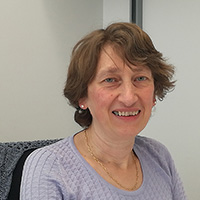The Leica SR GSD microscope allows to perform single-molecule localization microscopy (SMLM) experiments, such as dSTORM, STORM, PALM, or SPT, in standard epifluorescence or TIRF mode. A dichroic image splitter is used for spectral demixing of fluorophore emission in multi-color SMLM. The optional mounting of cylindrical lenses allows for 3D-imaging based on astigmatism, or alternatively, astigmatism can be induced with a MicAO 3DSR adaptive optics system.
The SR GSD allows a range of localization super-resolution experiments (SMLM: dSTORM, GSDIM, STORM, PALM, PAINT), particle tracking, standard wide-field epifluorescence and TIRF microscopy, transmission microscopy. Samples can be mounted either on standard slides or in 35mm-diameter glass bottom petri dishes (preferred for liquid mounting media).
The Leica SR GSD system is based on the Leica DMI6000 B inverted microscope that is equipped with a 160x/1.47 oil immersion TIRF objective. The specially designed SuMo sample stage with objective linked to the stage and active anti-vibration table ensures low sample drift (rate of <20 nm in 10 min). The maximal achievable resolution, depending on specimen, lies in the range of 20 to 70 nm; the localization precision of individual fluorophores can be as high as a few nanometers.
Different laser lines can be used for excitation of fluorescence and photoconversion: 405 nm 50 mW, 488 nm 300 mW, 532 nm 1000 mW, 642 nm 500 mW. The images are captured by the Andor iXon3 897 EMCCD camera with equivalent pixel size of 100 nm. The field of view with the 160x objective lens is 51x51 µm in conventional wide-field mode and 18x18 µm during super-resolution imaging.
The microscope is driven by the LAS AF software that allows for full control of experiments and super-resolution image reconstruction in real time, as well as after the acquisition with various post-processing options. In addition, custom software is provided for spectral demixing, as well as drift correction, the compensation of chromatic distortions, and cluster analysis of localization data.
The microscopy room is equipped with basic tools for mounting of samples and their storage at +4 °C/-20 °C. Imaging buffer for dSTORM is provided, that optimizes the performance of the fluorophores AF647, CF660C and CF680 for two- or three-color imaging. Samples can be mounted either on standard slides or on 35 mm diameter glass bottom petri dishes.
IGBMC/CBI-Biostructure-Strasbourg

